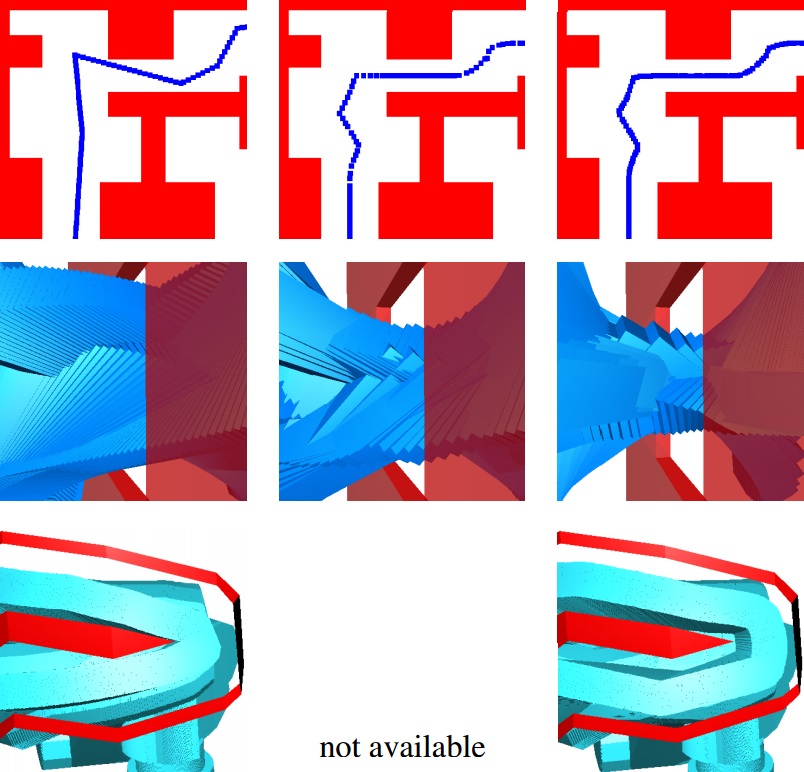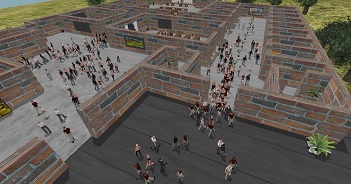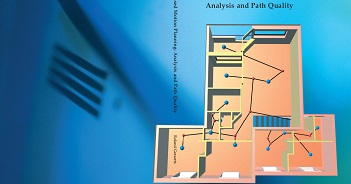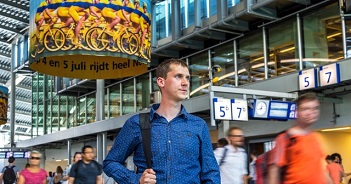Abstract
In robot motion planning, many algorithms have been proposed that create a path for a robot in an environment with obstacles. Since it can be hard to create such paths, most algorithms are aimed at finding a solution. However, for most applications the paths must be of a good quality as well. That is, paths should preferably be short, be smooth, and should preserve some clearance from the obstacles. In this paper, we focus on improving the clearance of paths. Existing methods only extract high clearance paths for rigid, translating bodies. We present an algorithm that improves the clearance along paths of a broader range of robots which may reside in arbitrary high-dimensional configuration spaces. Examples include planar, free-flying and articulated robots.
References
-
Roland Geraerts and Mark H. Overmars. On Improving the Clearance for Robots in High-Dimensional Configuration Spaces. In IEEE/RSJ International Conference on Intelligent Robots and Systems (IROS'05), pp. 4074-4079, 2005.
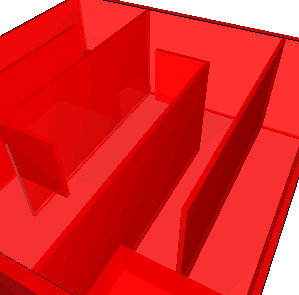
-
Roland Geraerts and Mark H. Overmars. Clearance Based Path Optimization for Motion Planning. In IEEE International Conference on Robotics and Automation (ICRA'04), pp. 2386-2392, 2004.
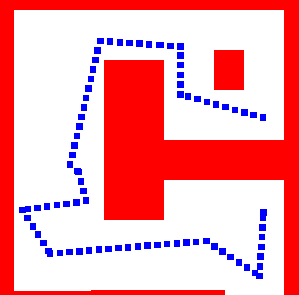
-
On Improving the Path Quality for Motion Planning. In Conference of the Advanced School for Computing and Imaging (ASCI'04), pp. 211-217, 2004.

Technique

A retraction of a robot with 2 DOFs.

A retraction of a robot with 6D DOFs.
Results
We applied our new retraction algorithm to a set of paths. The results are visualized in the figure below. The left column shows the initial paths. The middle column shows the paths retracted by our previous approach. The pictures in the right column show our new results.
